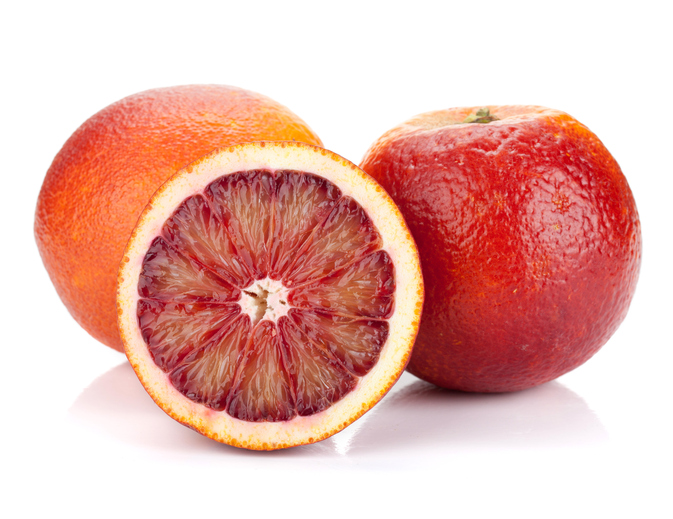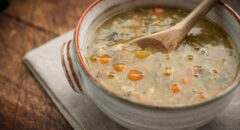 We’re all familiar with sweet oranges like the Valencia and Navel. But there’s another sweet orange you should know—the blood orange (also called the red orange). While the name “blood orange” may not sound appealing, once tasted you’re likely to fall in love with this nutrient powerhouse.
We’re all familiar with sweet oranges like the Valencia and Navel. But there’s another sweet orange you should know—the blood orange (also called the red orange). While the name “blood orange” may not sound appealing, once tasted you’re likely to fall in love with this nutrient powerhouse.
Blood oranges have a reddish orange outer peel and red color flesh. The red color comes from anthocyanins, the same compound that makes blackberries blue and red cabbage red. Anthocyanins are not only pigments but powerful antioxidants with many health benefits.
Numerous studies have shown an association between anthocyanins’ high antioxidant activity and a decreased risk of chronic diseases such as cancer, heart disease and type 2 diabetes. A study published in the American Journal of Clinical Nutrition found that individuals who consumed more than two servings of anthocyanin-rich fruit per week had a lower risk of type 2 diabetes.
In addition to it’s high anthocyanin content, blood oranges are low in calories which may help prevent obesity, a major risk factor for type 2 diabetes.
At just 70 calories per fruit, blood oranges are an excellent source of vitamin C, and a good source of fiber and potassium.
READ THIS: Move Over Oranges! 9 Surprising Foods Packed With Vitamin C
How to Buy and Store. Blood orange season begins in December and lasts through April. When purchasing, look for bright orange-colored fruit with a slight rose colored blush. Choose oranges that are firm and heavy for size. Blood oranges like other oranges can be stored at room temperature for several days or in a refrigerator fruit bin for up to a week. For the best flavor, bring the fruit to room temperature before eating.
How to Use. It’s best to eat blood oranges whole instead of drinking blood orange juice. Whole oranges are richer in dietary fiber than juice, and the juicing process drastically reduces the antioxidant qualities of anthocyanins found in the whole fruit. Blood oranges are easy to peel and section and have few if any seeds.
“I like them [blood oranges] better than 'conventional' oranges because they have a richer taste," says Robyn Webb, award-winning cookbook author, culinary instructor and Food Editor of Diabetes Forecast Magazine.
Webb suggests the following ways to include blood oranges in your diet:
Wisk in salad dressing. Squeeze the juice of one blood orange, whisk with Dijon mustard, honey, and olive oil.
Use them in baking. Prepare a low fat crust filled with homemade vanilla pudding and blood orange slices.
Combine them in a salad. Combine with roasted cubed beets, a tad of goat cheese and fresh mixed greens topped with toasted pistachios for a lovely salad.
Make fresh juice. Drinking fresh blood orange juice has been shown to help improve vision, lower cholesterol, slow skin aging and more.
Basically, you can use blood oranges in any recipe that calls for Navel oranges.
READ THIS: 13 Foods With More Vitamin C Than Oranges









